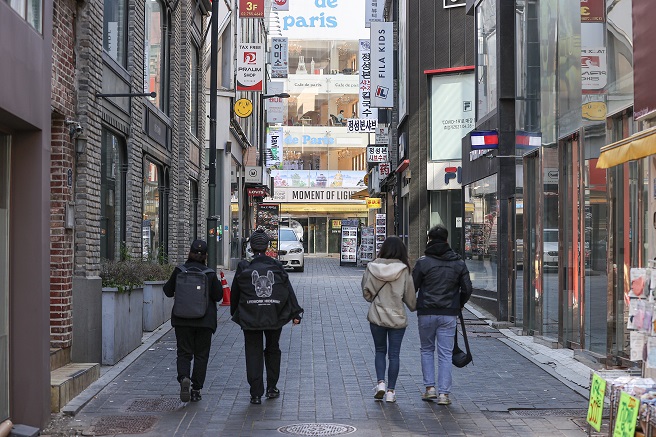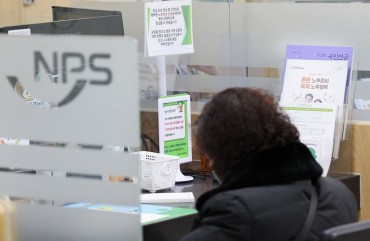
This file photo from Nov. 6, 2022, shows people walking on the streets of Myeongdong in central Seoul. (Yonhap)
SEOUL, March 1 (Korea Bizwire) — A significant number of young Koreans have debts that are more than three times what they earn every year, largely due to rising housing prices and investment fever, a report showed Tuesday.
According to data analyzed by the Korea Institute for Health and Social Affairs, households represented by young South Koreans between 19 and 39 years of age held average debt of 84.6 million won (US$64,200) in 2021, 2.48 times larger than in 2012.
Excluding households without debt, the average debt was 114.1 million won.
The data also showed that 21.8 percent of households showed a debt-to-income ratio of more than 300 percent, 2.6 times higher than 10 years ago.
It was more likely for households consisting of a married couple or those with children to have a debt-to-income ratio of more than 300 percent compared to single-person households.
The increase rate was also faster. Low-income earners and those living in the greater Seoul Area were more likely to have a debt-to-income ratio of more than 300 percent.
In 2021, the share of young households with a debt service ratio of over 30 percent stood at 25.8 percent nationwide, up by 10 percentage points from 2012.
Young households with a debt-to-asset ratio of more than 300 percent, too, jumped from 11.8 percent in 2012 to 16.7 percent in 2021.
The increasing debt among young South Koreans is largely related to an increase in housing prices and the difficulty of buying a home, as well as investment fever in the real estate market.
The data showed that 66.5 million won, which was 79 percent of the average amount of debt among young households (84.6 million won), consisted of a mortgage loan from a financial institution.
Credit loans amounted to 13.4 million won. The average value of mortgage loans was 2.6 times higher than 10 years ago, with credit loans doubling.
Of the average debt, 69 percent or 58.2 million won was borrowed for housing purposes, while 14 million won was borrowed for business and investment.
Loans for housing almost tripled, and loans for business and investment increased by roughly 60 percent over the past 10 years.
H. M. Kang (hmkang@koreabizwire.com)






